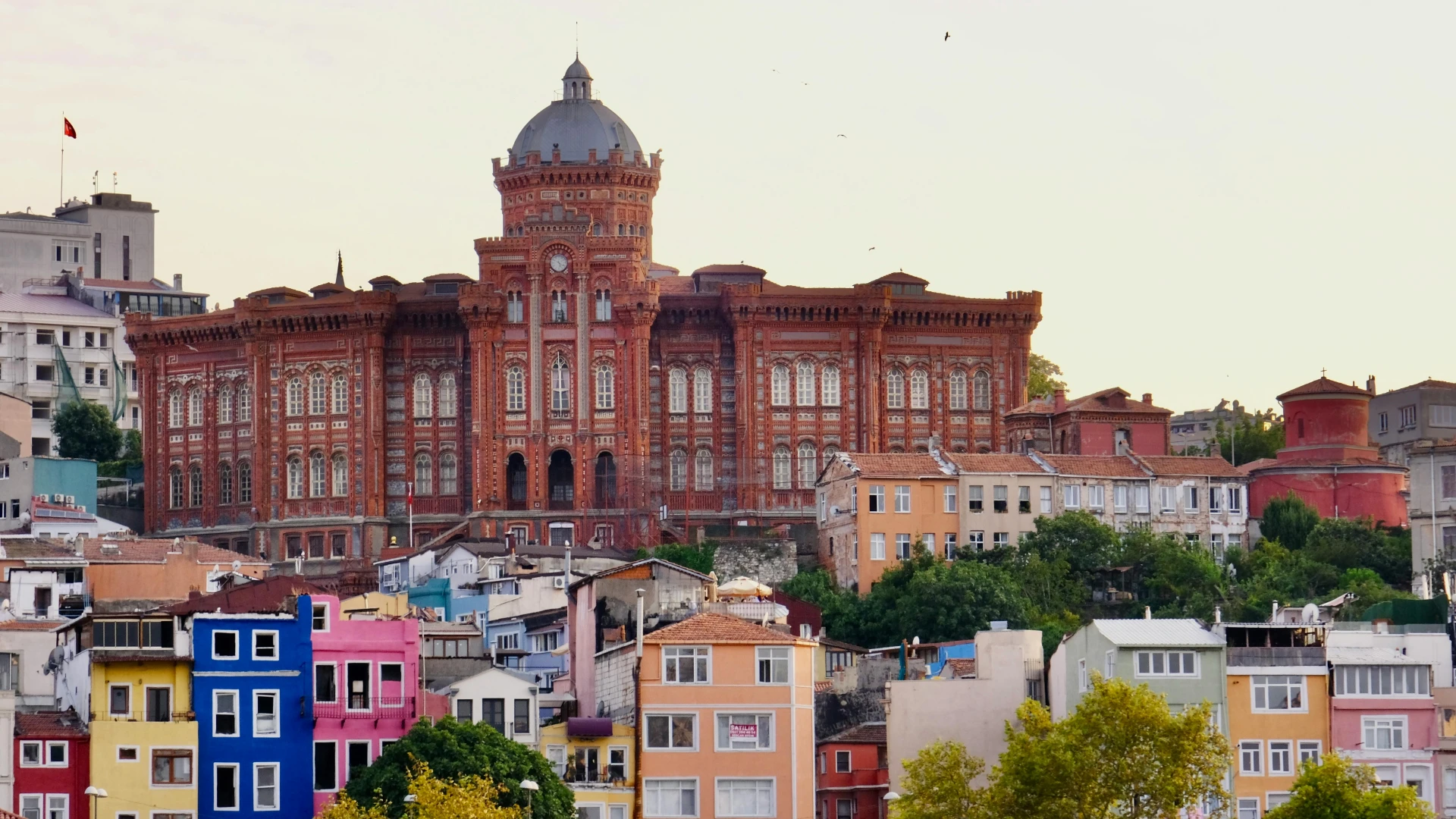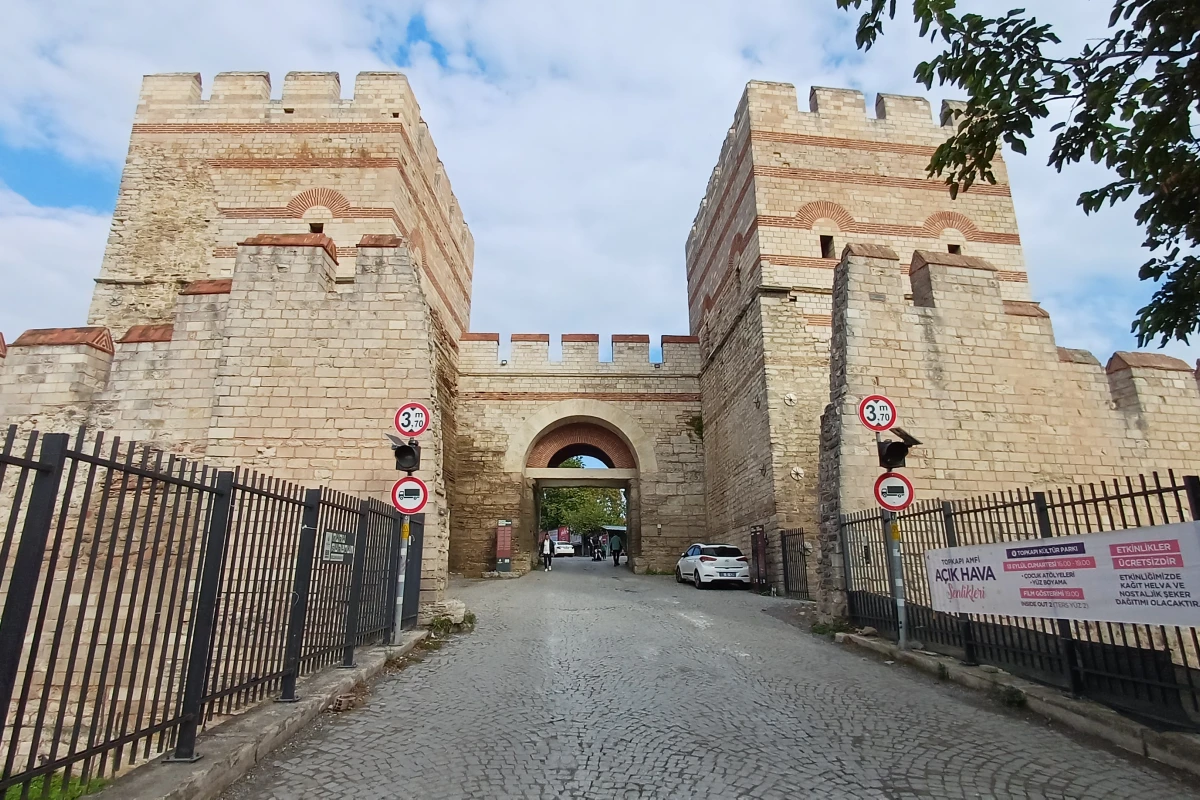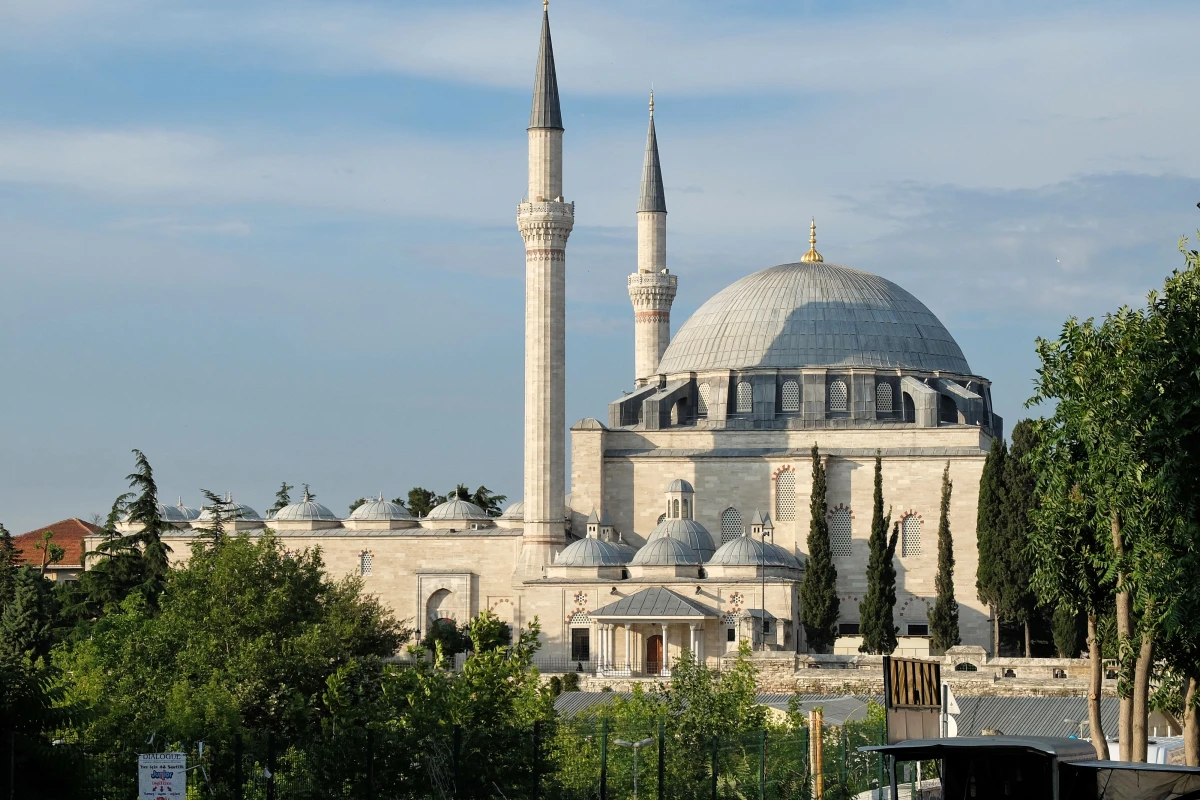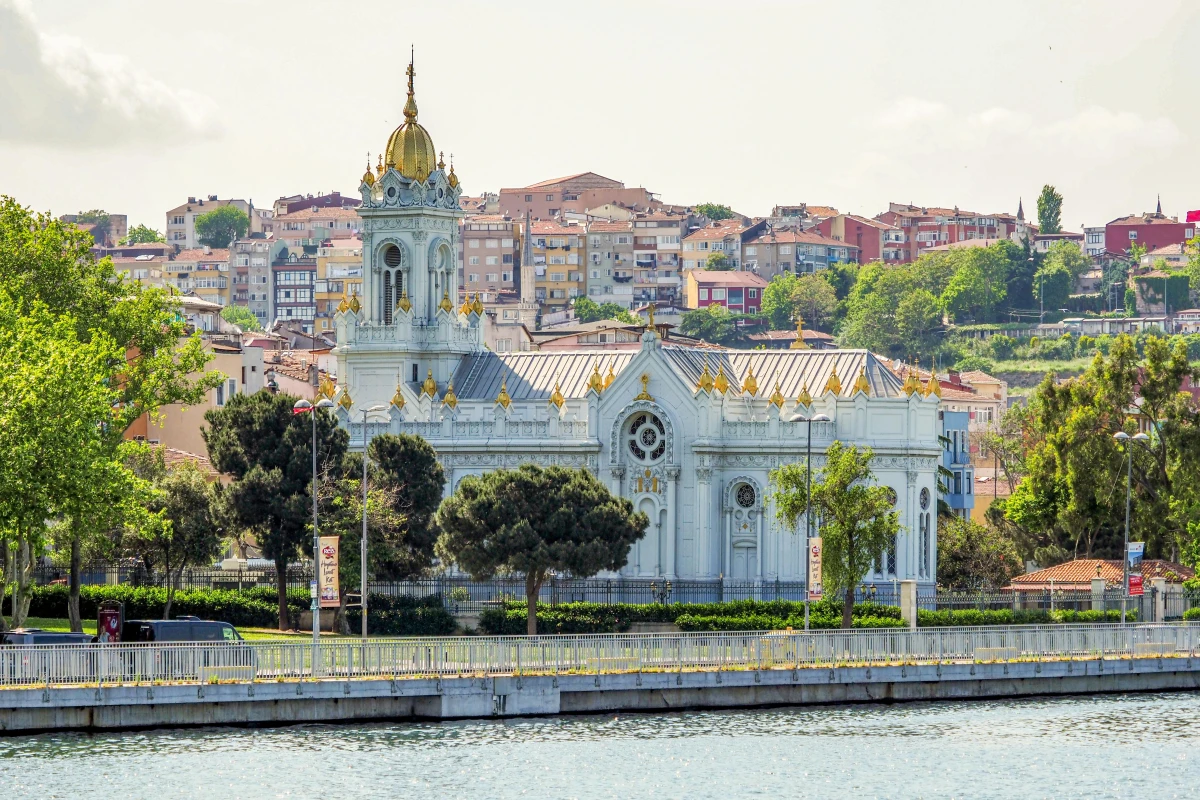With its striking red Marseille brick architecture, Fener Rum High School is a castle-like building that dominates the skyline of the Fener district. Built in the 1880s by the Greek architect Konstantinos Dimadis, who was renowned for designing many castles across Europe, the school features an eclectic style with neo-Baroque and neo-Gothic elements. Due to its castle-like structure, the school was also called as “the 5th largest castle in Europe”. At the top of the building, the large dome functions as an observatory for astronomy classes and houses a sizable antique telescope. On the entrance gate, ΠΑΤΡΙΑΡΧΙΚΗ ΜΕΓΑΛΗ Τȣ ΓΕΝȣΣ ΣΧΟΛΗ is written, meaning “Patriarchate's Great School of the Nation”.
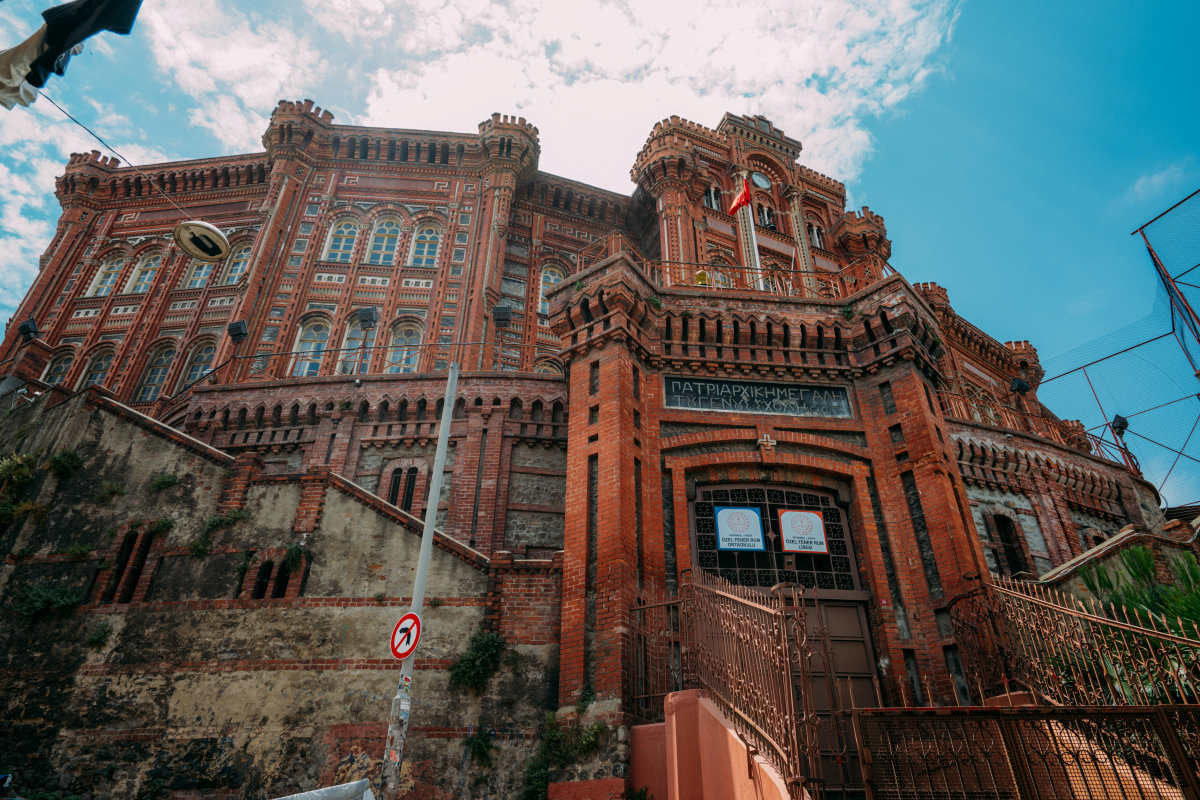
Entrance of the Fener Rum High School
History of Fener Rum High School
Although it remains active as a school, today it serves only a few dozen students due to the shrinking Greek community in Istanbul. While the current building dates from the 19th century, the history of the school itself stretches back to 1454, just one year after the conquest of Istanbul by Mehmed the Conqueror. The Sultan invited the Greek community, many of whom had fled after the conquest, to return to the city, guaranteeing them the right to live freely and to practice their religion. As a result, the school was established in 1454 following an agreement between Sultan Mehmed and Greek Patriarch Gennadius Scholarius.
The original school stood next to the Patriarchate at the Church of the Holy Apostles, which was later demolished to make way for the Fatih Mosque. After the decision to construct the Fatih Mosque, the Patriarchate was relocated—first to the Fethiye Church, and eventually to Fener, where it remains today. The school moved along with it, as it functioned as the Patriarchate’s institution and produced a significant number of clergy for the Rum Orthodox community.
Education in Fener Rum High School
When it was first established, the school was giving an education mostly based on theology, however courses on ancient and modern philosophy and literature were also available. In 1861, with the development of the rights of non-Muslims, the school made its curriculum a more liberal one, based on classical education. In 1903, classical philology and pedagogy courses were added to prepare future primary school teachers.
With the declaration of the Turkish Republic in 1923, the school was renamed Fener Rum High School for Boys. Right next to the red building, there was a High School for Girls, too. The two schools were united after the decision by the government of a shift to mixed-gender education.
Land of a Moldavian Prince: Dimitrie Cantemir
The land of the school belonged to a Moldavian prince, Dimitrie Cantemir, who was educated himself in this school, too. Cantemir had also a palace right at the foot of the school, whose only some ruins came to this day. In his palace, this prince not only lived but also composed some of the finest examples of Ottoman classical music. He was also a prolific writer and a polyglot, his best-known work is History of the Growth and Decay of of the Ottoman Empire.
Is Fener Rum High School Open to Visit?
The school opens its doors for visitors one weekend in a year, usually mid-December. If you are planning to visit the school, be careful to go early in the morning since long queues are expected due to its limited time of opening.


